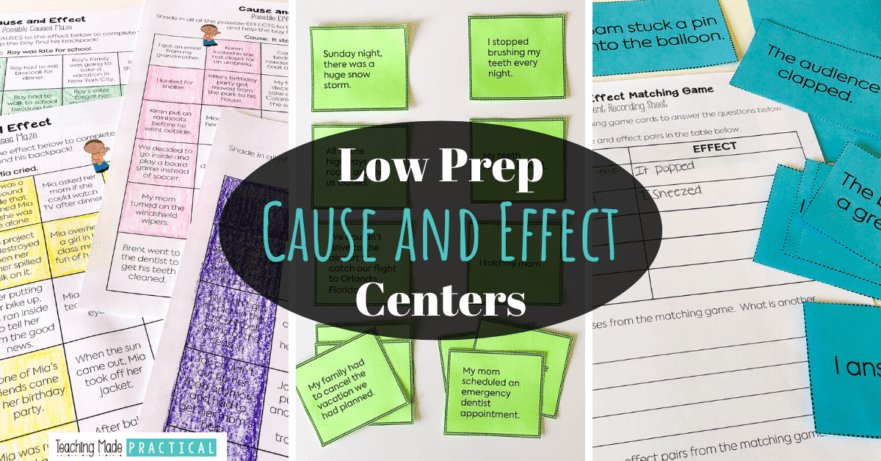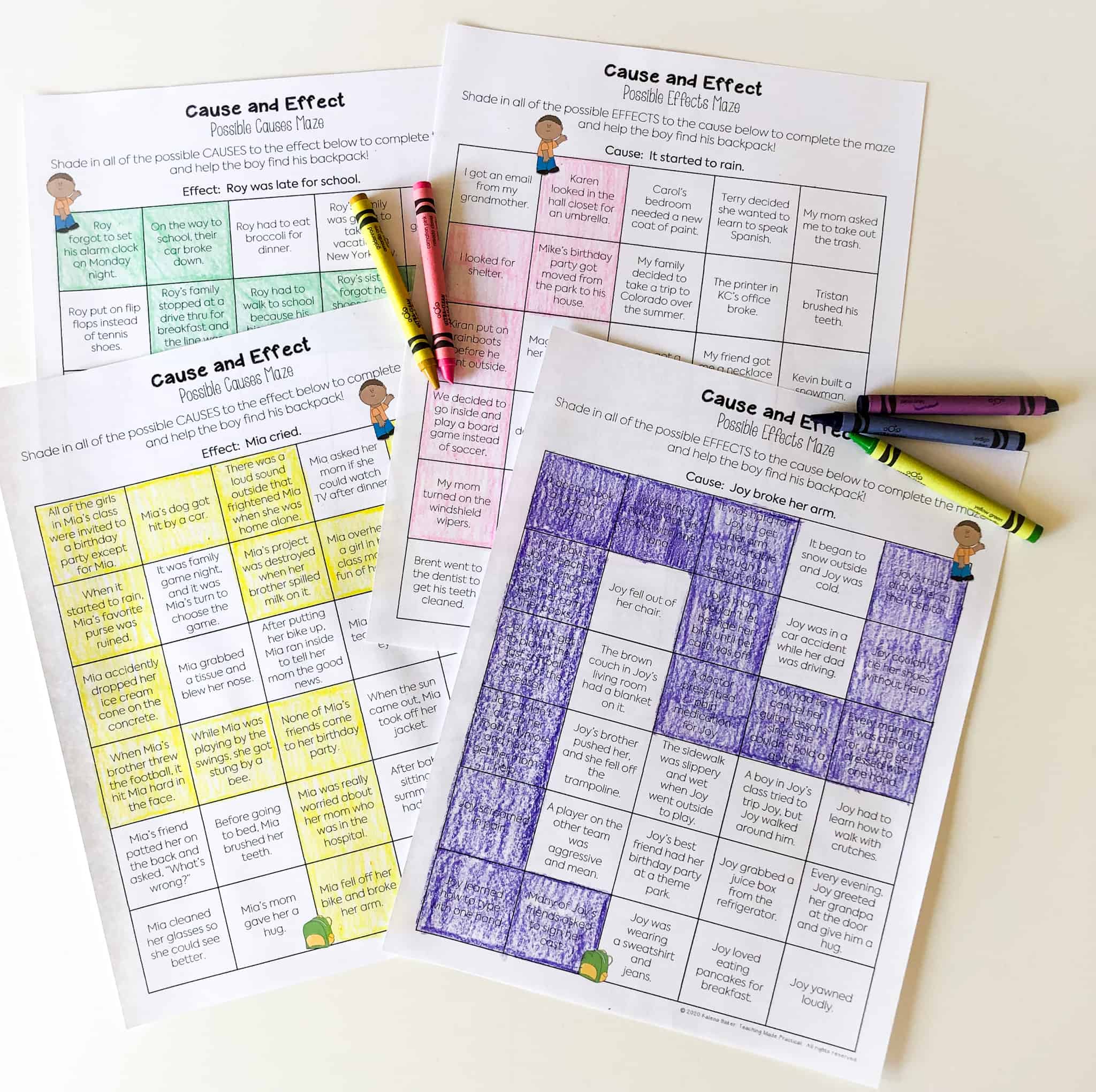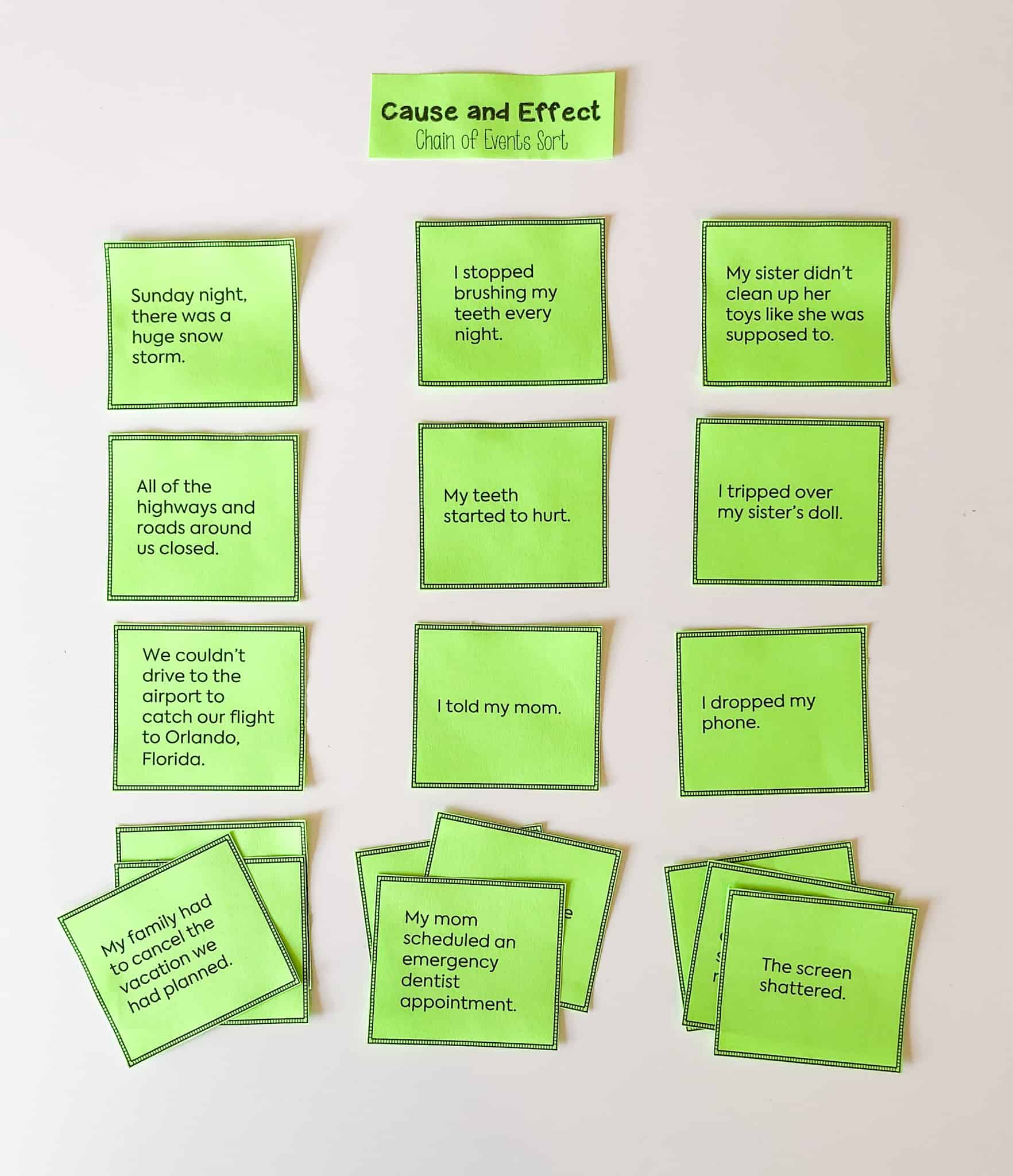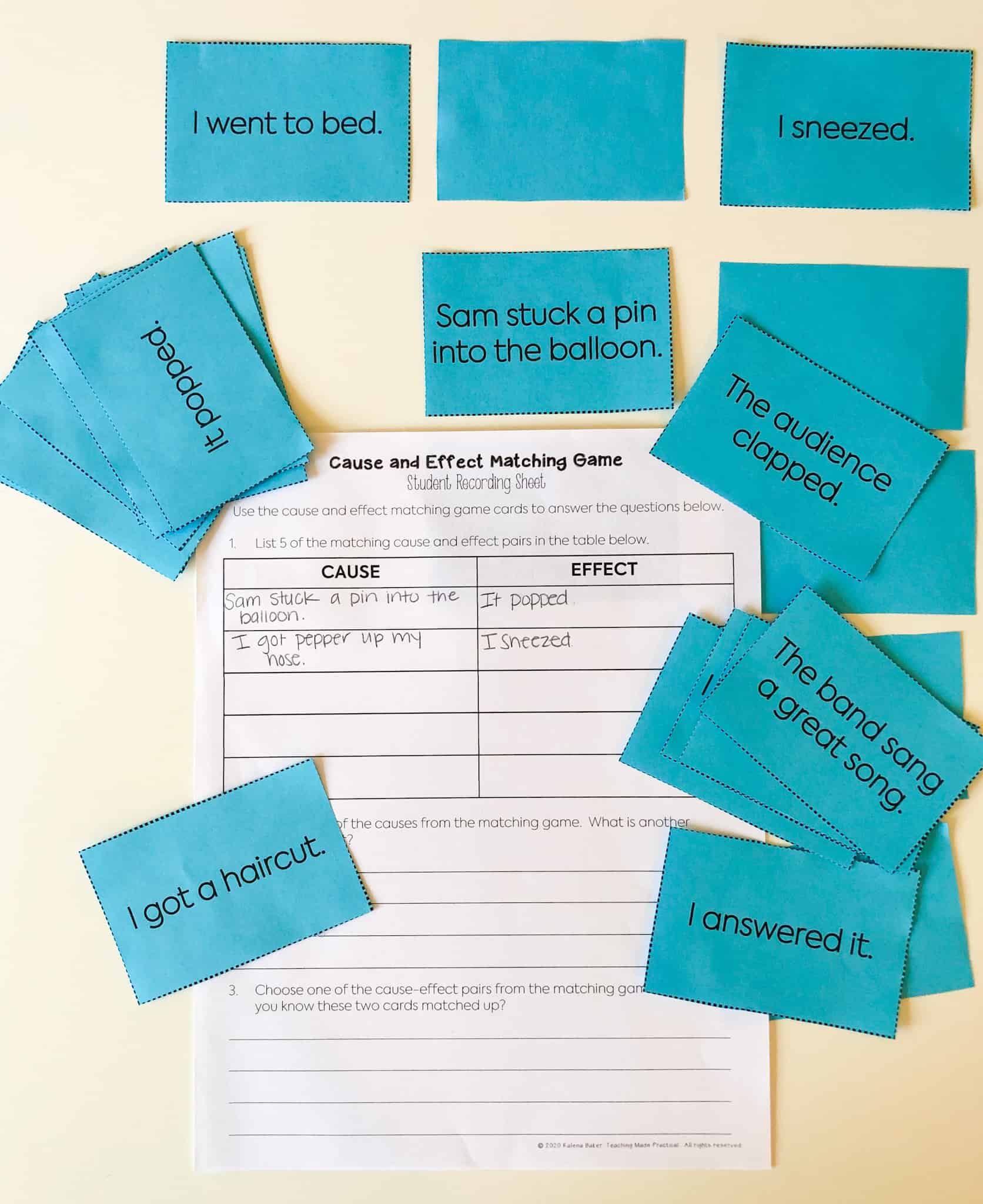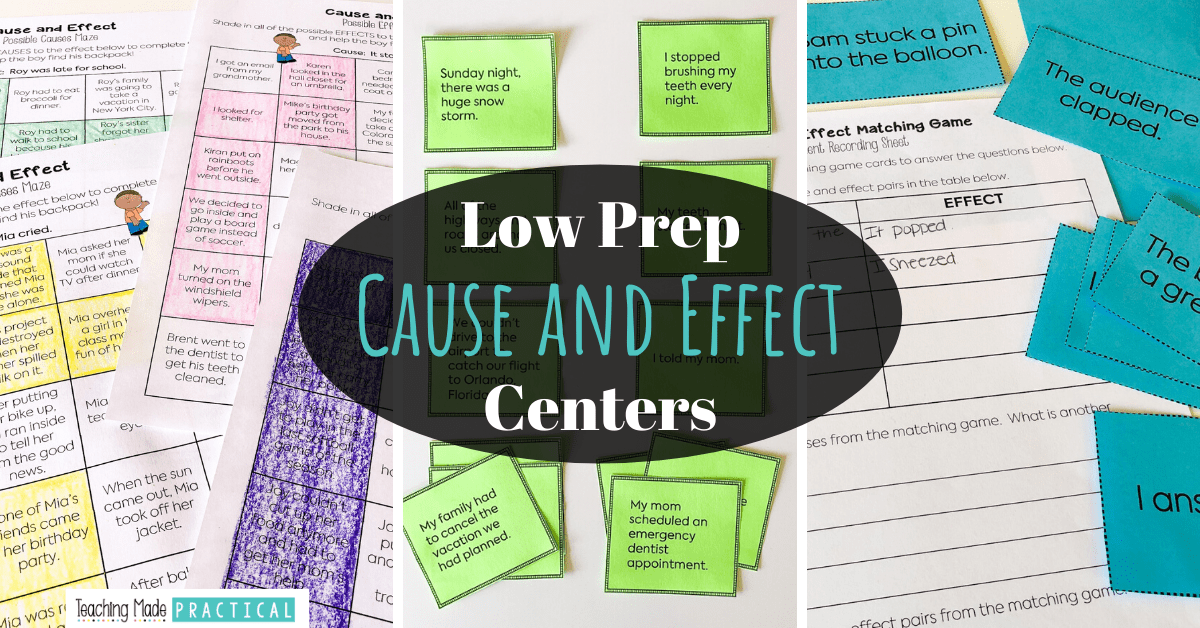
Once students reach 3rd and 4th grade, they have already been introduced to the basics of cause and effect. However, they still need a chance to practice and review this skill in a way that challenges their thinking. Below are some ideas for creating cause and effect centers that will be engaging to upper elementary students. You can use these ideas to create these centers on your own, or save time and minimize prep by buying them here.
All of the centers below come with a student recording sheet to help students explain their thinking, as well as to make it easy for you to hold students accountable and easily provide a grade (if desired).
Center #1: Cause and Effect Mazes
When teaching cause and effect, we often have students match up one cause with one effect. However, students will often come across situations where there are multiple causes or multiple effects. Activities that get students to think about more than one possible cause or effect tend to be more rigorous.
In these mazes, students must think about multiple causes or multiple effects in order to complete the maze.
In some of the mazes, students are given a cause. They shade in all of the short scenarios that could be possible effects of the given cause to complete the maze successfully.
The other mazes provide a possible effect, and students must shade in possible causes to the given effect.
Mazes like this are a unique and engaging way to help students practice reading skills like this. My main idea, theme, and character trait mazes are some of my most popular resources.
Center #2: Cause and Effect Sort / Chain of Events
Thinking about the chain of events is another often overlooked aspect of teaching cause and effect. Giving 3rd, 4th, and 5th grade students an opportunity to think about how the effect of one event can be a cause for a new event is an interesting nuance that students need a chance to practice.
In this chain of events sort, students are given 18 cards. Students organize the cards into 3 groups, and order each of those groups into a logical cause and effect order based on a chain of events.
Center #3: Cause and Effect Matching Game
Using a cause and effect matching game is a popular way to help students review cause and effect, and for good reason. It requires students to think about how different events might relate to each other in a cause and effect way.
It also is a very familiar game, so it's easy to explain the rules to students without wasting valuable class time.
For your students that aren't quite ready the more rigorous cause and effect mazes or chain of events sort, a cause and effect matching game is a good place for them to start - and these cause and effect anchor chart ideas might help.
Never Stress Over Sub Plans Again!
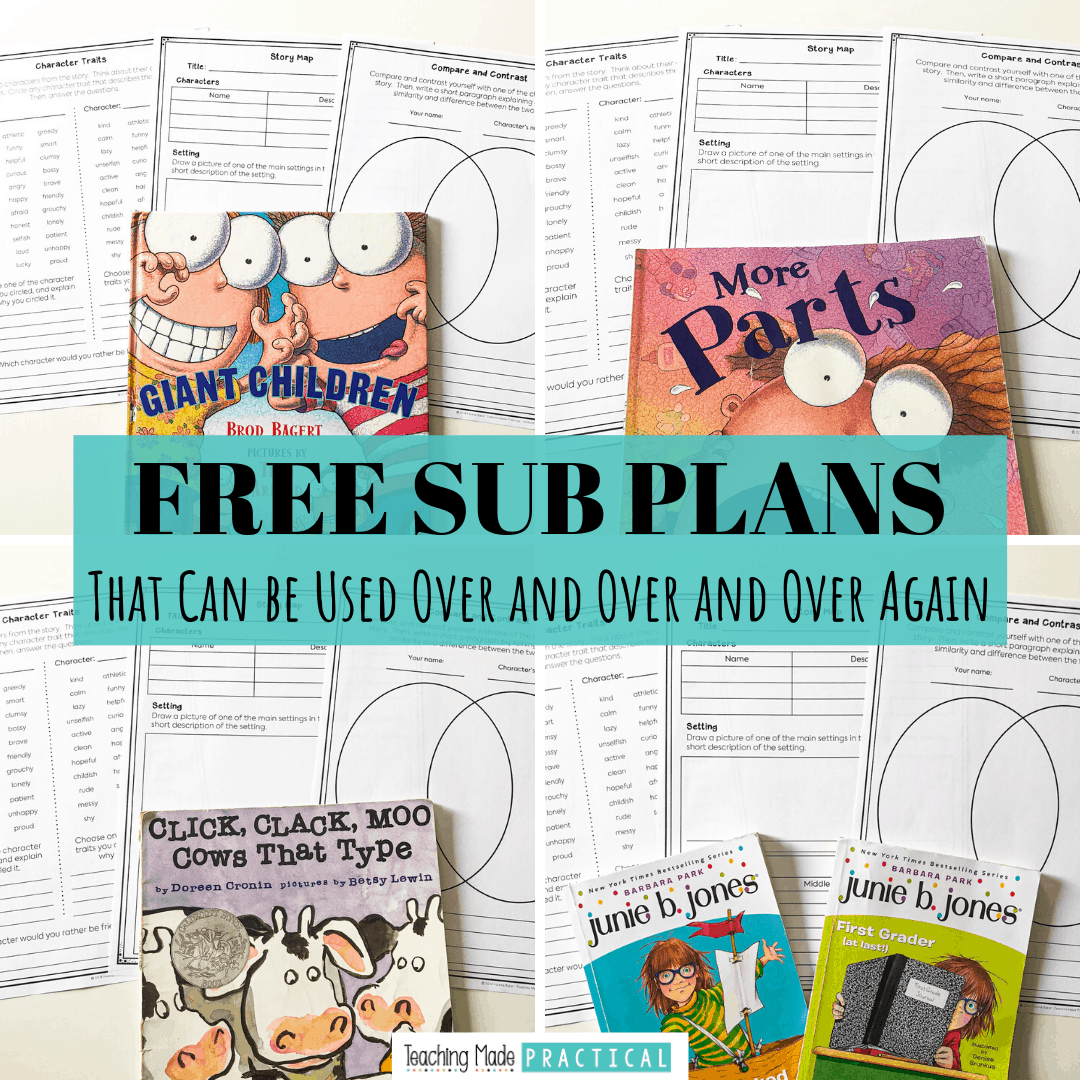
Make copies, find a fiction book, and you'll be ready for any emergency that comes your way!

